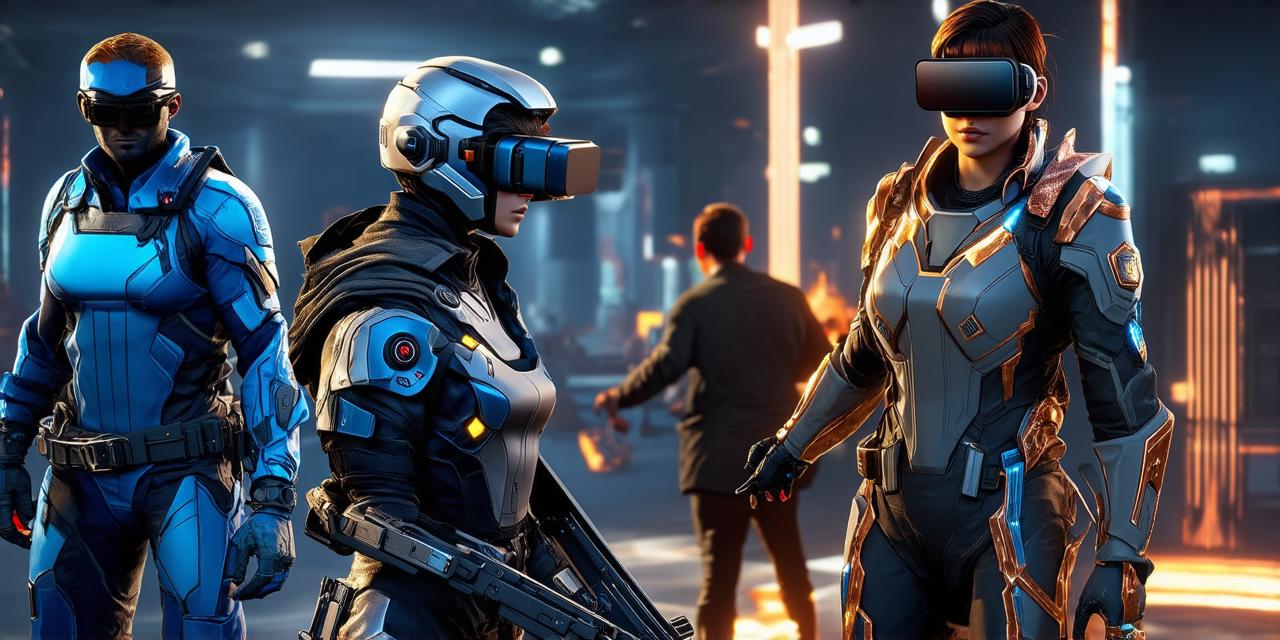As technology continues to evolve at an unprecedented pace, virtual reality (VR) is rapidly gaining traction as a new form of interaction that’s changing the way we experience the world. With VR, users can immerse themselves in fully interactive and hyper-realistic environments, allowing them to explore, interact, and engage with the digital world in ways previously unimaginable.
From gaming to education, healthcare, and entertainment, VR is transforming our daily lives by providing new opportunities for immersive learning, therapy, and relaxation. In this article, we’ll take a closer look at how virtual reality has influenced our daily lives, as well as the latest advancements in VR technology and their potential impact on various industries.
Virtual Reality: A New Frontier of Human-Computer Interaction
At its core, virtual reality is an immersive computing experience that simulates a 3D environment in which users can interact with digital objects using specialized sensors and controllers. Unlike traditional forms of interaction such as touchscreens, VR provides a more realistic and engaging way to interact with the digital world.
One of the key aspects of VR is its ability to transport users into different worlds, allowing them to experience new environments and perspectives in ways that were previously impossible. This has led to a wide range of applications in various fields, including gaming, education, healthcare, and entertainment.
Virtual Reality in Gaming: A New Era of Immersive Entertainment
Gaming is one of the first industries to embrace virtual reality technology, with developers creating immersive gaming experiences that allow users to fully engage with the game world. VR games offer a level of immersion that was previously unattainable, allowing players to feel like they are truly part of the action.
One example of this is the popular VR game “Beat Saber,” which uses virtual reality to create a highly engaging and immersive rhythm game experience. Players use light sabers to slash through blocks that represent beats in music, all while being fully immersed in a hyper-realistic environment. The result is a fun and exciting gaming experience that’s unlike anything else on the market.
Virtual Reality in Education: A New Way to Learn
Virtual reality is also changing the way we learn by providing new opportunities for immersive education experiences. With VR, students can explore complex subjects in a more engaging and interactive way, allowing them to gain a deeper understanding of the material.
One example of this is the use of VR simulations in medical training. Students can use VR technology to simulate surgical procedures, allowing them to practice their skills in a safe and controlled environment. This has the potential to revolutionize medical education by providing students with hands-on experience that was previously unattainable.
Virtual Reality in Healthcare: A New Approach to Therapy
Virtual reality is also being used in healthcare to provide new forms of therapy and treatment. For example, VR technology can be used to simulate real-life situations that trigger anxiety or phobias, allowing patients to confront and overcome their fears in a controlled environment.
One such therapy is called “exposure therapy,” which uses VR simulations to expose patients to situations that trigger their anxiety or phobia. This has been shown to be highly effective in treating a wide range of mental health conditions, including anxiety disorders, post-traumatic stress disorder (PTSD), and phobias.
Virtual Reality in Entertainment: A New Form of Immersive Experience
Virtual reality is also being used in entertainment to create new forms of immersive experiences that go beyond traditional forms of media such as movies and television. For example, VR technology can be used to create fully interactive live events, allowing attendees to experience the event in a more engaging and interactive way.
One example of this is the use of VR technology at concerts and music festivals. Using specialized sensors and controllers, attendees can interact with the virtual environment, allowing them to dance, jump, and engage with the music in new and exciting ways. This has the potential to revolutionize the way we experience live events, creating a future that’s truly out of this world.
Virtual Reality: The Future of Human-Computer Interaction
As virtual reality technology continues to evolve, it’s clear that its influence on our daily lives will only continue to grow. From gaming and education to healthcare and entertainment, VR is providing new opportunities for immersive interaction that were previously unimaginable.
While there are still many challenges to overcome in terms of developing the technology and ensuring widespread adoption, it’s clear that virtual reality is here to stay. And as the technology continues to advance, we can expect to see even more innovative uses of VR in a wide range of industries.
FAQs:
Virtual reality is an immersive computing experience that simulates a 3D environment in which users can interact with digital objects using specialized sensors and controllers.
Virtual reality is being used in a wide range of industries, including gaming, education, healthcare, and entertainment.
Virtual reality works by simulating a 3D environment that users can interact with using specialized sensors and controllers.
Some examples of virtual reality applications include gaming, education, healthcare, and entertainment.
Virtual reality technology is likely to continue to evolve, providing even more innovative uses in a wide range of industries.
